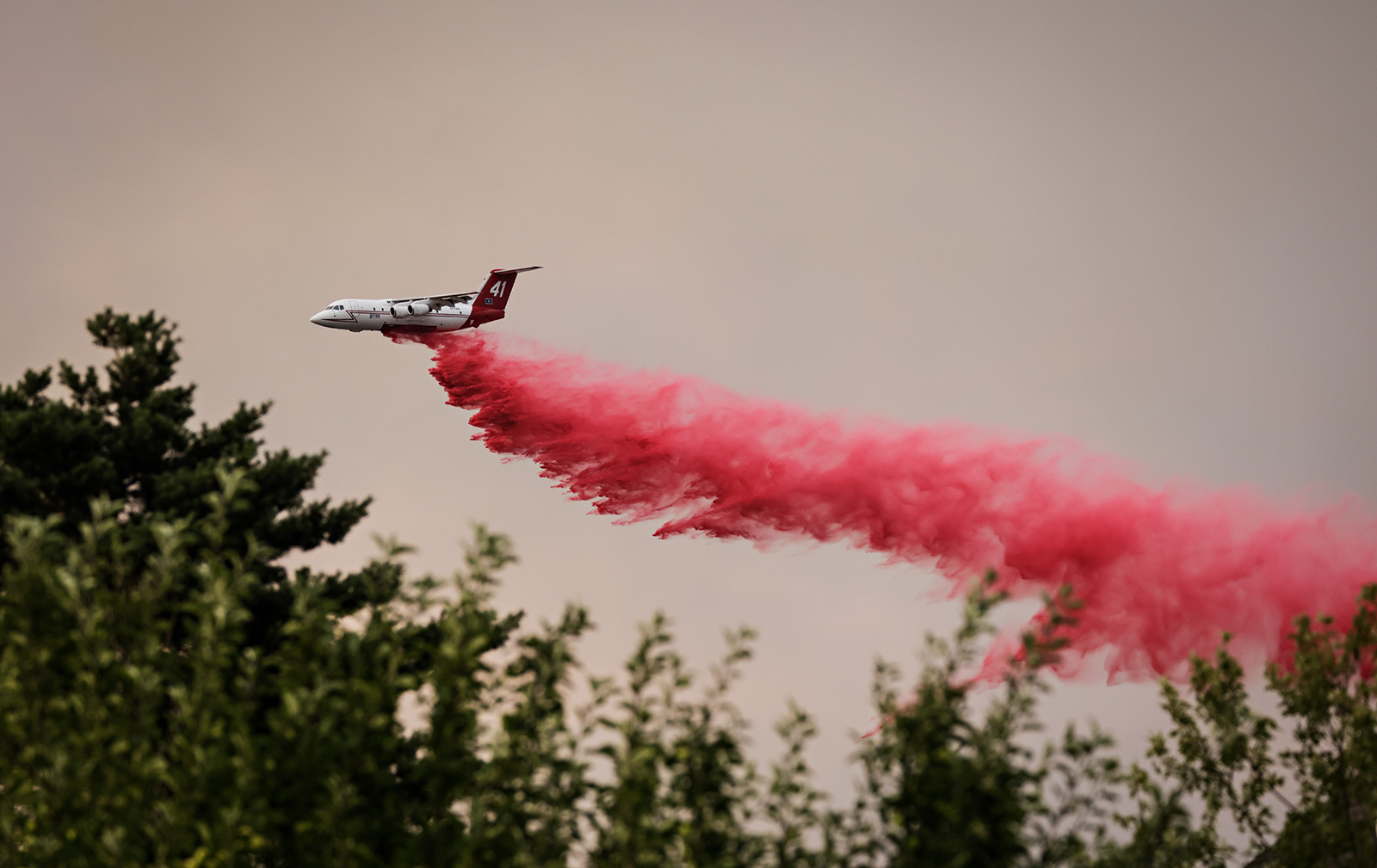Judge Says Fire Retardant Drops are Polluting Streams but Allows Use to Continue
The ruling from a federal judge in Missoula came after environmentalists sued the U.S. Forest Service for dropping the red slurry material into waterways hundreds of times over the past decade
By Matthew Brown Associated Press
BILLINGS — A judge ruled Friday that the U.S. government can keep using chemical retardant to fight wildfires, despite finding that the practice pollutes streams in western states in violation of federal law.
The ruling from U.S. District Judge Dana Christensen in Montana came after environmentalists sued the U.S. Forest Service for dropping the red slurry material into waterways hundreds of times over the past decade.
Government officials say chemical fire retardant is sometimes crucial to slowing the advance of dangerous blazes. Wildfires across North America have grown bigger and more destructive over the past two decades as climate change warms the planet.
Christensen said halting the use of fire retardant would “conceivably result in greater harm from wildfires — including to human life and property and to the environment.”
More than 200 loads of retardant got into waterways over the past decade. Federal officials say those situations usually occurred by mistake and in less than 1% of the thousands of loads annually.
A coalition that includes Paradise, California — where a 2018 blaze killed 85 people and destroyed the town — had said a court ruling that stopped the use of retardant would have put lives, homes and forests at risk.
“This case was very personal for us,” Paradise Mayor Greg Bolin said. “Our brave firefighters need every tool in the toolbox to protect human lives and property against wildfires, and today’s ruling ensures we have a fighting chance this fire season.”
State and local agencies often depend heavily on the U.S. Forest Service to help fight fires, many of which originate or include federal land.
The Oregon-based group Forest Service Employees for Environmental Ethics argued in its lawsuit filed last year that the Forest Service was disregarding the Clean Water Act by continuing to use retardant without taking adequate precautions to protect streams and rivers.
The judge said the ruling was limited to 10 western states where the members of the group alleged they had suffered harm due to pollution into waterways that they use.
After the lawsuit was filed the Forest Service applied to the Environmental Protection Agency for a permit that would allow it to continue using retardant without breaking the law. That process could take years. Christensen ordered federal officials to report every six months on their progress.
Experts say climate change, people moving into fire-prone areas, and overgrown forests are creating more catastrophic megafires that are harder to fight.
More than 100 million gallons (378 million liters) of fire retardant were used during the past decade, according to the Department of Agriculture. It’s made up of water and other ingredients including fertilizers or salts that can be harmful to fish, frogs, crustaceans and other aquatic animals.
A government study found misapplied retardant could adversely affect dozens of imperiled species, including crawfish, spotted owls and fish such as shiners and suckers.
Health risks to firefighters or other people who come into contact with fire retardant are considered low, according to a 2021 risk assessment.
Forest Service officials said they are trying to come into compliance with the law by getting a pollution permit but that could take years.
As the 2023 fire season gets underway, California Forestry Association President Matt Dias said the prospect of not having fire retardant available to a federal agency that plays a key role on many blazes was “terrifying.”
Many areas of the Western U.S. experienced heavy snowfalls this past winter, and as a result fire dangers are lower than in recent years across much of the region.